Table of content
Passion fruit juice, with its vibrant hue and tantalizing blend of sweet and tart flavors, has become a beloved beverage across the globe. Originating from the tropical regions of South America, this exotic fruit—scientifically known as Passiflora edulis—has captivated taste buds with its unique aroma and refreshing taste. Whether you’re a seasoned home cook or a curious beginner, learning to craft homemade passion fruit juice is a rewarding endeavor that allows you to savor the essence of summer in every sip. This guide will walk you through the entire process, from selecting the finest fruits to bottling your final creation, ensuring a result that rivals store-bought alternatives.
Understanding Passion Fruit: A Brief Introduction
Before diving into the recipe, it’s essential to appreciate the star ingredient. Passion fruit grows on a vine, producing round or oval-shaped fruits with a tough, waxy rind. The interior reveals a jelly-like pulp filled with crunchy, edible seeds. There are two primary varieties: the purple passion fruit (Passiflora edulis var. edulis) and the yellow passion fruit (Passiflora edulis var. flavicarpa). The purple variant, smaller and sweeter, is often preferred for juicing, while the yellow type offers a tangier kick. Both varieties are rich in antioxidants, vitamins A and C, fiber, and minerals like potassium and iron, making passion fruit juice not only delicious but also nutritious.
Selecting the Perfect Passion Fruits
The foundation of exceptional passion fruit juice lies in selecting ripe, high-quality fruits. Here’s what to look for:
-
Appearance: Ripe passion fruits should have a slightly wrinkled rind. For purple varieties, the skin should be deep purple or dark red; yellow ones should sport a golden-yellow hue. Avoid fruits with bruises, mold, or overly shriveled skin, as these may indicate spoilage.
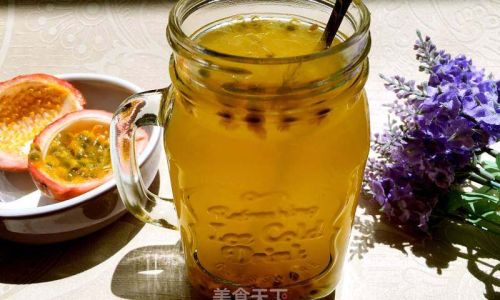
-
Texture: Gently squeeze the fruit. A ripe passion fruit should yield slightly to pressure without feeling mushy. Underripe fruits will be firm, while overripe ones may feel hollow or collapsed.
-
Aroma: A ripe passion fruit emits a sweet, floral fragrance. If there’s no scent, the fruit is likely underripe; a fermented smell suggests it’s past its prime.
-
Weight: Heavier fruits indicate juicier interiors. Lightweight passion fruits may be dry or dehydrated.
When purchasing, opt for organic fruits if possible to minimize pesticide exposure. Store unripe passion fruits at room temperature until they ripen, then refrigerate them to extend their shelf life.
Tools and Ingredients You’ll Need
Creating passion fruit juice requires minimal equipment but yields maximum flavor. Here’s your shopping list:
- Passion fruits: 10–12 medium-sized fruits (yields approximately 4 cups of juice)
- Sweetener (optional): Honey, agave syrup, or granulated sugar (to taste)
- Water: 2–3 cups (adjust based on desired consistency)
- Lemon or lime juice: 1–2 tablespoons (enhances flavor)
- Ice cubes: For serving
Tools:
- Sharp knife
- Cutting board
- Spoon
- Fine-mesh sieve or cheesecloth
- Blender or food processor (optional)
- Large bowl
- Pitcher or glass bottles for storage
Step-by-Step Guide to Making Passion Fruit Juice
Preparing the Passion Fruits
Start by washing the fruits under cool water to remove dirt or residues. Pat them dry with a clean towel. Using a sharp knife, slice each passion fruit in half crosswise. The interior will reveal a cavity filled with aromatic pulp and seeds.
Extracting the Pulp
Scoop out the pulp and seeds using a spoon, transferring them into a blender or food processor. For a pulp-free juice, some recipes recommend straining the pulp immediately, but blending first helps release more juice. If you prefer a chunkier texture, skip the blender and proceed to straining.
Blending (Optional)
Blend the pulp and seeds on low speed for 10–15 seconds. This step breaks down the seeds slightly, releasing their natural oils and enhancing the juice’s flavor. However, over-blending may result in a bitter taste, so exercise caution.
Straining the Pulp
Place a fine-mesh sieve over a large bowl and pour the blended pulp into it. Use a spatula or spoon to press the mixture, extracting as much juice as possible. For a clearer juice, line the sieve with cheesecloth and repeat the process. The strained liquid will be thick and vibrant, while the leftover seeds and pulp can be discarded or repurposed (see “Creative Uses for Leftover Pulp” below).
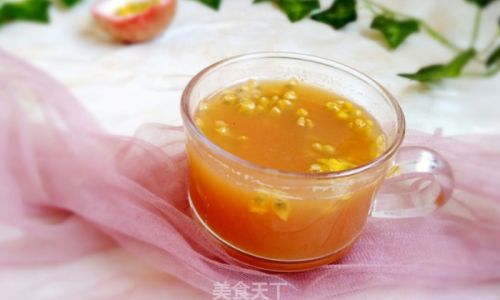
Diluting and Sweetening
Transfer the strained juice to a pitcher. Add water gradually, stirring until you achieve your desired consistency. Start with 2 cups and adjust as needed. Taste the juice and sweeten to preference. A tablespoon of honey or sugar per cup of juice is a good starting point, but feel free to experiment. Lemon or lime juice adds a bright citrus note, balancing the passion fruit’s tartness.
Chilling and Serving
Refrigerate the juice for at least 1 hour to allow the flavors to meld. Serve over ice with a garnish of fresh mint, a slice of lime, or a passion fruit half for an elegant touch.
Variations and Customizations
Passion fruit juice’s versatility lends itself to endless experimentation. Here are some ways to elevate your recipe:
- Tropical Twist: Blend the juice with mango, pineapple, or coconut water for a Caribbean-inspired beverage.
- Creamy Delight: Add a splash of coconut milk or yogurt for a rich, velvety texture.
- Spiced Infusion: Incorporate a cinnamon stick, star anise, or a slice of ginger during the chilling process.
- Boozy Option: Mix in white rum, vodka, or tequila for a refreshing cocktail.
Storing Your Passion Fruit Juice
Homemade passion fruit juice can be stored in the refrigerator for 3–4 days in an airtight container. For longer shelf life, freeze the juice in ice cube trays and transfer the cubes to a freezer-safe bag. Thaw as needed, or blend the cubes into slushies.
Health Benefits of Passion Fruit Juice
Beyond its delicious taste, passion fruit juice offers a wealth of health benefits:
- Rich in Antioxidants: Compounds like vitamin C, beta-carotene, and flavonoids combat oxidative stress, reducing the risk of chronic diseases.
- Boosts Immunity: A single cup provides over 50% of your daily vitamin C requirement, supporting immune function.
- Aids Digestion: The fruit’s fiber content promotes gut health and prevents constipation.
- Enhances Sleep: Passion fruit contains alkaloids like harman, which may have sedative properties, improving sleep quality.
However, moderation is key due to its natural sugar content. Consult a healthcare provider if you have dietary concerns.
Troubleshooting Common Issues
- Bitter Aftertaste: This may result from over-blending the seeds. Strain the juice again or reduce blending time next time.
- Too Tart: Balance the flavor with sweetener or a pinch of salt.
- Thin Consistency: Add a tablespoon of chia seeds and let the juice sit for 10 minutes to thicken.
Creative Uses for Leftover Pulp
Don’t discard the strained seeds and pulp—repurpose them creatively:
- Passion Fruit Vinegar: Mix the pulp with white vinegar and let it ferment for a tangy dressing.
- Face Mask: Combine the pulp with honey and yogurt for a glow-boosting skincare treatment.
- Baking Ingredient: Fold the pulp into muffin batter or cake mix for a tropical twist.
Sustainability Tip: Growing Your Own Passion Fruit Vine
If you’re a gardening enthusiast, consider planting a passion fruit vine. These vigorous climbers thrive in warm climates and can be grown in pots indoors. With proper care, you’ll enjoy a bounty of fresh fruits year-round, reducing your carbon footprint and ensuring a steady supply for juicing.
Conclusion
Crafting homemade passion fruit juice is a labor of love that rewards you with a beverage bursting with flavor and nutrients. By selecting ripe fruits, mastering the extraction process, and experimenting with customizations, you can create a drink that’s uniquely yours. Whether enjoyed on a sun-drenched patio or shared with friends at a gathering, this tropical elixir is sure to delight. So, grab your apron, stock up on passion fruits, and embark on a culinary adventure that celebrates the bounty of nature. Cheers to homemade goodness!
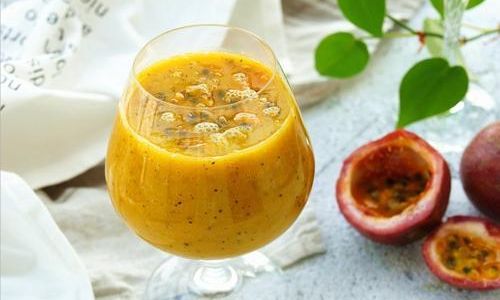
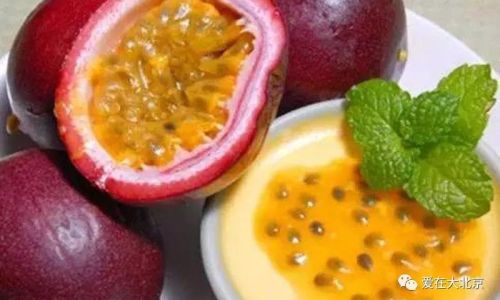
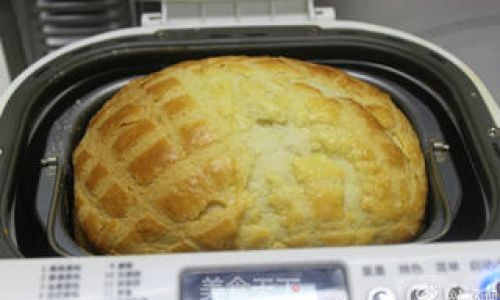
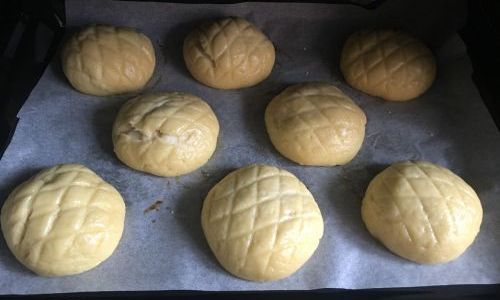
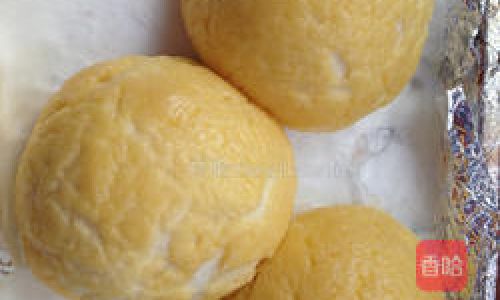
0 comments